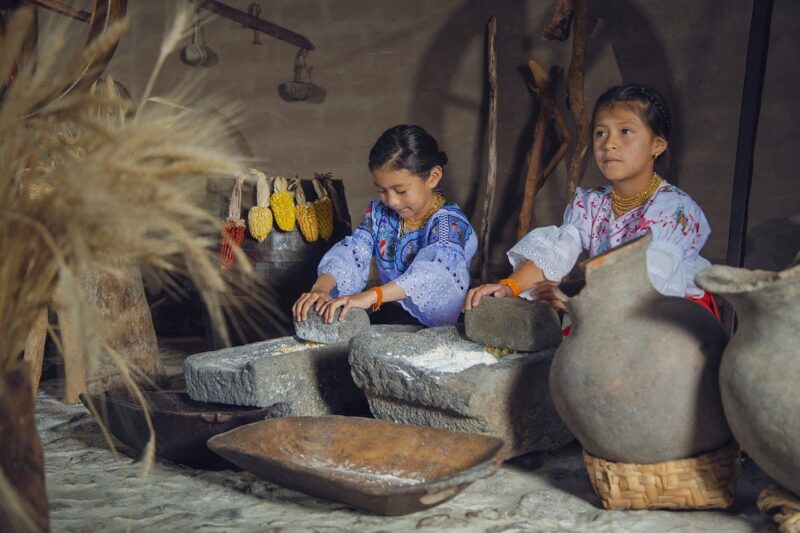The Role of the Internet in Preserving Indigenous Cultures and Languages
November 16, 2024

The advent of the internet has brought about profound changes in countless aspects of our daily lives, ranging from how we communicate and conduct business to how we consume information. However, one of the most significant yet often overlooked impacts of the internet is its role in preserving indigenous cultures and languages. In this article, we will explore how the internet serves as a powerful tool for revitalizing endangered languages, sharing cultural practices, and fostering a sense of community among indigenous peoples.
1. Understanding Indigenous Cultures and Languages
Indigenous cultures are rich and diverse, steeped in traditions, customs, and languages that have been passed down through generations. However, many of these languages face extinction due to globalization, urbanization, and the dominance of major world languages. As of 2023, it is estimated that over 7,000 languages are spoken worldwide, yet nearly half of these are considered endangered.
The loss of language often leads to the erosion of cultural identity, as language is a crucial carrier of history, philosophy, and values. Indigenous peoples are increasingly recognizing the importance of using modern technology, particularly the internet, to counteract this trend.
2. The Internet as a Tool for Language Preservation
The internet provides various platforms for documenting, teaching, and learning indigenous languages. Here are some significant ways it contributes to language preservation:
a) Online Dictionaries and Resources
Many indigenous communities and organizations have created online dictionaries and language learning resources. Websites like the Native American Languages Association provide comprehensive tools for those wishing to learn and practice these languages. By having these resources universally accessible, individuals from around the globe can learn endangered languages, helping keep them alive.
b) Social Media and Community Engagement
Social media platforms like Facebook and Instagram have become vibrant spaces for indigenous peoples to share their languages and cultures. Community pages, hashtags, and group forums allow for the exchange of cultural stories, music, art, and language lessons, facilitating connection among those who share similar backgrounds.
For instance, hashtags like #IndigenousLanguages can help spread awareness and promote language learning initiatives. This sense of community fosters pride and a collective responsibility to preserve cultural heritage.
c) Multimedia Resources
YouTube channels, podcasts, and online courses provide diverse avenues for language learning. Various indigenous communities utilize these resources to share oral traditions, songs, and stories in their respective languages. By incorporating visual and auditory elements, these multimedia resources can engage a wider audience and attract younger generations.
3. Case Studies: Successful Language Revitalization
Several communities have successfully used the internet to revitalize their languages:
a) Maori Language Movement in New Zealand
The Maori language, or Te Reo Maori, faced substantial decline; however, the New Zealand government has taken proactive measures to revitalize it. Online platforms have played a crucial role in this revival. Resources such as Māori Television and various social media campaigns have helped engage younger generations in learning and using their native language.
b) The Ojibwe Language and Culture Initiative
In North America, the Ojibwe people have harnessed the power of the internet to promote their language. The Ojibwe Language and Culture Initiative has developed interactive online learning tools, such as mobile applications and websites, allowing users to learn the language at their own pace. This initiative emphasizes cultural education wrapped around language to create a holistic learning approach.
4. The Role of Technology in Cultural Storytelling
The sharing of stories is an integral part of culture and identity for many indigenous peoples. The internet has allowed for more extensive documentation and storytelling through various mediums:
a) Digital Storytelling
Digital storytelling combines traditional narrative techniques with modern technology, allowing indigenous peoples to share their experiences and histories through online videos, blogs, and social media. This enables a broader audience to appreciate and understand these rich cultural narratives, fostering respect and connection.
b) Podcasts and Oral Histories
Podcasts featuring indigenous voices and narratives have gained popularity, giving people a platform to share their stories, challenges, and culture. These oral histories are crucial for preserving cultural practices and fostering intergenerational dialogue within communities.
5. Challenges and Considerations
While the internet provides vast potential for preserving and promoting indigenous cultures and languages, several challenges persist:
a) Digital Divide
Not all indigenous communities have equal access to the internet and technology. This digital divide can perpetuate existing inequalities and limit opportunities for cultural preservation. Addressing infrastructure gaps is crucial for ensuring that all indigenous peoples can benefit from online resources.
b) Cultural Appropriation
As indigenous cultures become more accessible online, there is a risk of cultural appropriation, where outsiders exploit indigenous cultures without understanding their significance. This underscores the importance of providing education and context when sharing indigenous languages and practices online.
Conclusion
In conclusion, the internet serves as a powerful ally in the preservation and revitalization of indigenous cultures and languages. Its capacity to provide resources, create community connections, and document cultural stories is invaluable. However, as we navigate this digital landscape, we must remain vigilant about the challenges that accompany it, ensuring that the benefits of technology are accessible to all indigenous communities. Through collaborative efforts and a focus on education, the internet may continue to play a pivotal role in the enduring legacy of indigenous peoples across the globe.
As we embrace the potential of digital technologies, we must also recognize the importance of protecting the integrity of these cultures, allowing indigenous voices to guide the process of cultural preservation in a way that respects their heritage and autonomy.








